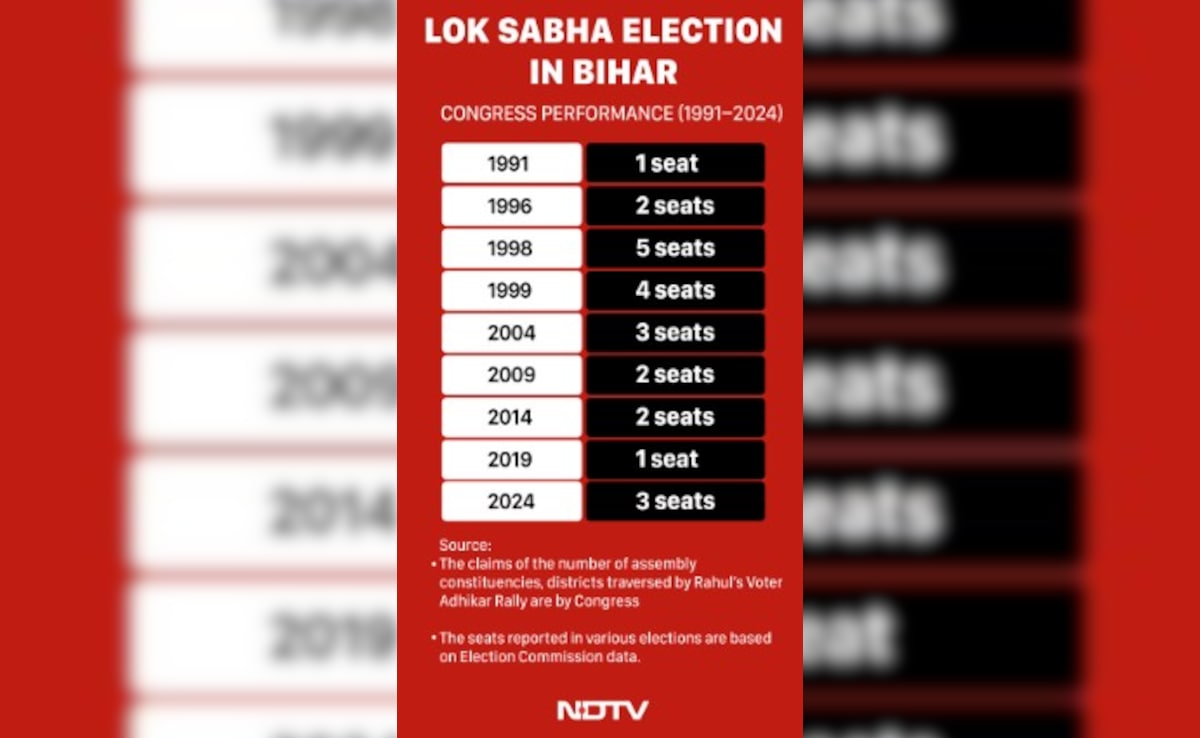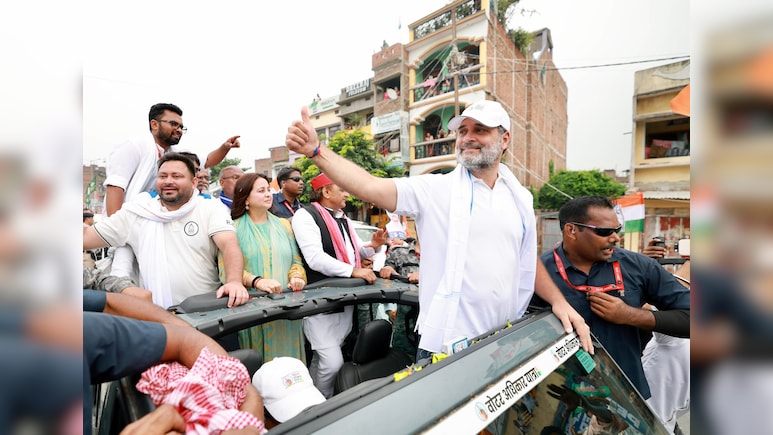
When Rahul Gandhi marched in the blistering August sun through the dusty arteries of Bihar - not as a scion of a dynasty, nor only as the leader of a party adrift, but as a solitary traveller, testing the resonance of words like adhikar and vishwas against the murmurs of a restless electorate -- he was not merely stretching his legs; he was stretching the memory of the Congress party in a state where it has long seemed like a ghost of its past.
The Voter Adhikar Rally, across 1,300 kms, threading through 25 districts, covering 110 assembly seats over 16 days, seemed less a march of spectacle than meditation, a reminder that politics, at its core, is about walking alongside strangers until they cease to be strangers. Accompanied by several INDIA bloc Chief Ministers - MK Stalin, Revanth Reddy, Siddaramaiah, Hemant Soren - and Samajwadi Party leader Akhilesh Yadav, Rahul Gandhi attempted to cement the Opposition alliance. The Voter Adhikar rally took him to seven of the 19 seats that the Congress had managed to win in 2020 - a modest foothold, but also a reminder that presence on the ground can sometimes shift the arithmetic of alliances and turnout.
Congress Resembles An Abandoned Haveli
The Congress in Bihar has for years resembled an abandoned haveli, its rooms still intact, heritage unquestioned, but walls echoing with silence. Nineteen seats in the 2020 assembly polls were fewer footholds than flickers, remnants of a time when the tricolour once draped entire regions. Could this rally, with its motorbike rides and late-night halts, its accusations of stolen votes and its promise of voice, become the spark that brings a relic back to relevance?
The Congress, with just 19 out of 243 seats in the 2020 Bihar Assembly, is the junior-most partner in the RJD-led Mahagathbandhan. In truth, its survival has rested on borrowed strength - the RJD's base among Yadavs and Muslims, and the occasional tactical transfers from allies. For the Congress to imagine a revival, it must convert dependency into durability. The rally, pitched around adhikar - the right to vote, the right to be counted - was a clever way of reframing a technical grievance (SIR -- voter roll revisions) into a moral and political cry. If voter suppression becomes the narrative, Congress can position itself not just as a passenger in the alliance but as the defender of democracy itself.
Still, numbers matter. Of the 110 assembly constituencies touched by Rahul Gandhi's rally route, the Congress had contested 22 in 2020 and won seven. These include pockets in Aurangabad, Kutumba (Aurangabad district), Araria, Bhagalpur, Jamalpur, Kadwa, and Muzaffarpur-places where the party still has recognisable MLAs. If Mr Gandhi can use the momentum of the march to energise these incumbents, it could turn isolated victories into clusters of strength. In a fragmented state like Bihar, where winning margins are often a few thousand votes, even a small swing can change the fate of the winner and the loser.
The Three Axes of Rahul Gandhi's Revival
But revival cannot be a matter of symbolism alone. The Congress's organisational machinery in Bihar is atrophied: district offices are skeletal, cadre migration is real, and the local leadership often plays second fiddle to the RJD. To change that, Mr Gandhi must focus on three axes:
1. Alliance Arithmetic: The Congress cannot dream of going it alone. Its path lies in cementing a durable role within the Mahagathbandhan, negotiating seat-sharing not on nostalgia but on demonstrable mobilisation. If the rally yields even a few per cent more in constituencies it passed through, it strengthens Congress's bargaining hand.
2. Local Leadership: Bihar's politics is caste-framed. The Congress must cultivate leaders from OBC, MBC, Dalit, and minority communities, beyond its traditional upper-caste loyalists, to avoid irrelevance. Therefore, the recent focus by Rahul Gandhi on the caste survey, the Telangana model. This means promoting younger MLAs, not parachuting candidates from Delhi.
3. Narrative Strategy: By making the "stolen voter" its rallying cry, the Congress has stumbled upon an issue that cuts across caste: disenfranchisement affects migrant workers, women, Dalits, and minorities alike. If it can brand itself as the guarantor of voting rights, the gateway to all other rights, it finds a wedge issue that neither RJD nor BJP has claimed fully.
The risks are evident. The BJP dismisses the yatra as "political theatre," while the JD(U) under Nitish Kumar emphasises governance and welfare schemes - a long list - with two decades of incumbency, from 2005 to 2025. The Congress must show that it is not merely echoing allies but carrying its own agenda, one rooted in rights, dignity, and participation.
Can Rahul Gandhi revive the Congress in Bihar? Perhaps revival is too strong a word. What he can do, through rallies such as this, is reposition the party: from a minor but indispensable partner, capable of winning 25-30 seats rather than clinging to 19. In a state where governments are formed on slender margins, such a bloc could mean the difference between opposition and power. In 2015, the Congress won 27 out of 41 seats. It shared power alongside JD(U) and RJD because in 2015, Chief Minister Nitish Kumar was part of the Mahagathbandhan, successfully challenging the BJP-led NDA.
And so, as Mr Gandhi walked from Sasaram to Patna, what was at stake was not merely a march but a negotiation with history. Each dusty kilometre measured whether the Congress can still convert memory into mandate-or whether its revival remains, like so many havelis in Bihar's towns, a beautiful but crumbling dream.
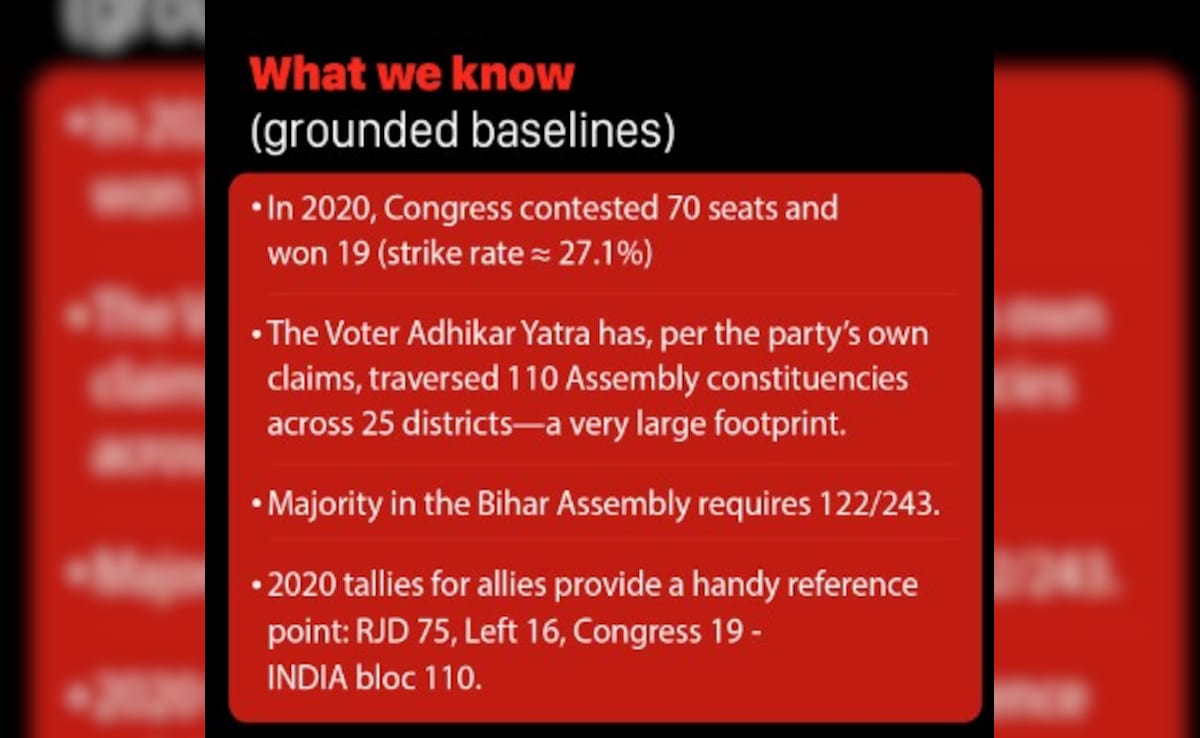
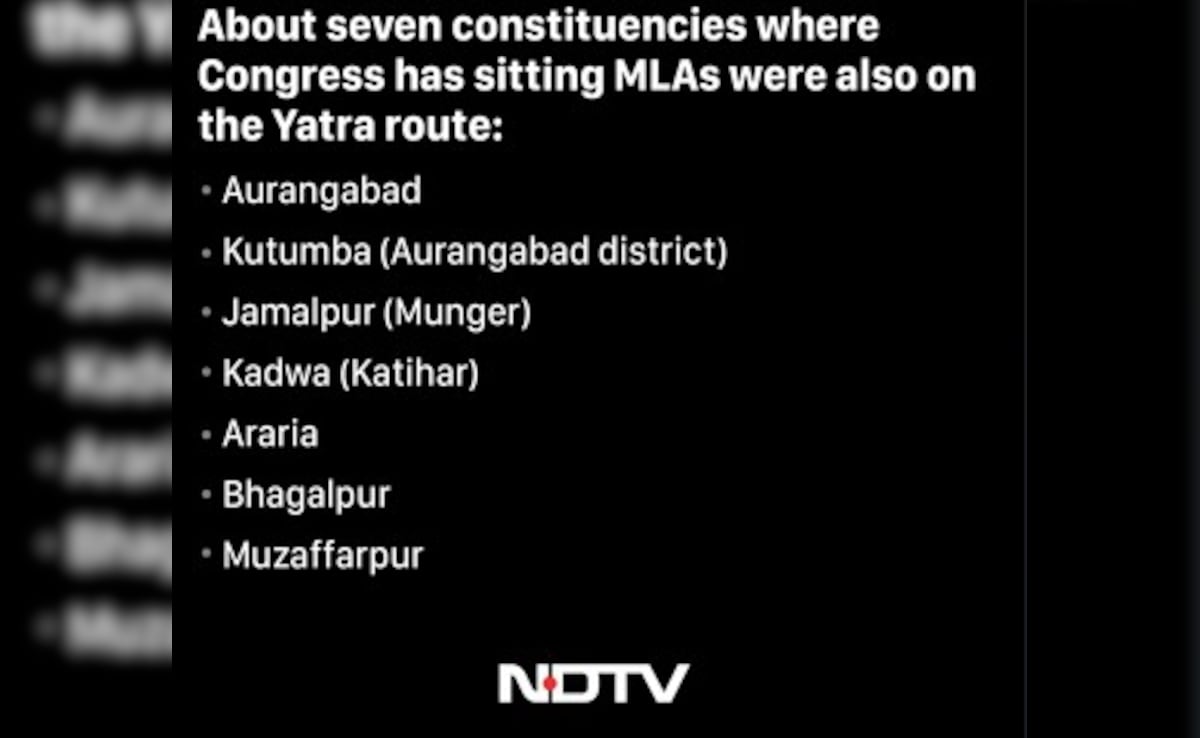
Shadows Over The Ganges: Congress In Bihar Since 1989
In 1989, as Bihar reeled under the burning shadow of the Bhagalpur riots, the Congress - once the unassailable symbol of national leadership - stood riven at its seams. That same year, its presence in the state was already faltering: in the Lok Sabha, the Congress held just four seats, a sudden plunge from the once-dominant tally of 48 seats in 1984.
This was not only a fall in numbers but a fissure in identity-The Congress's voice, once the voice of Bihar's many voices, was growing faint. A few years later, in the 1990 Bihar election, the party's foothold in the state legislature shrank dramatically to 71 seats, where, earlier-as recently as 1985, it had held 196 seats.
What follows is a ledger of slow retreat, year by year, election by election.
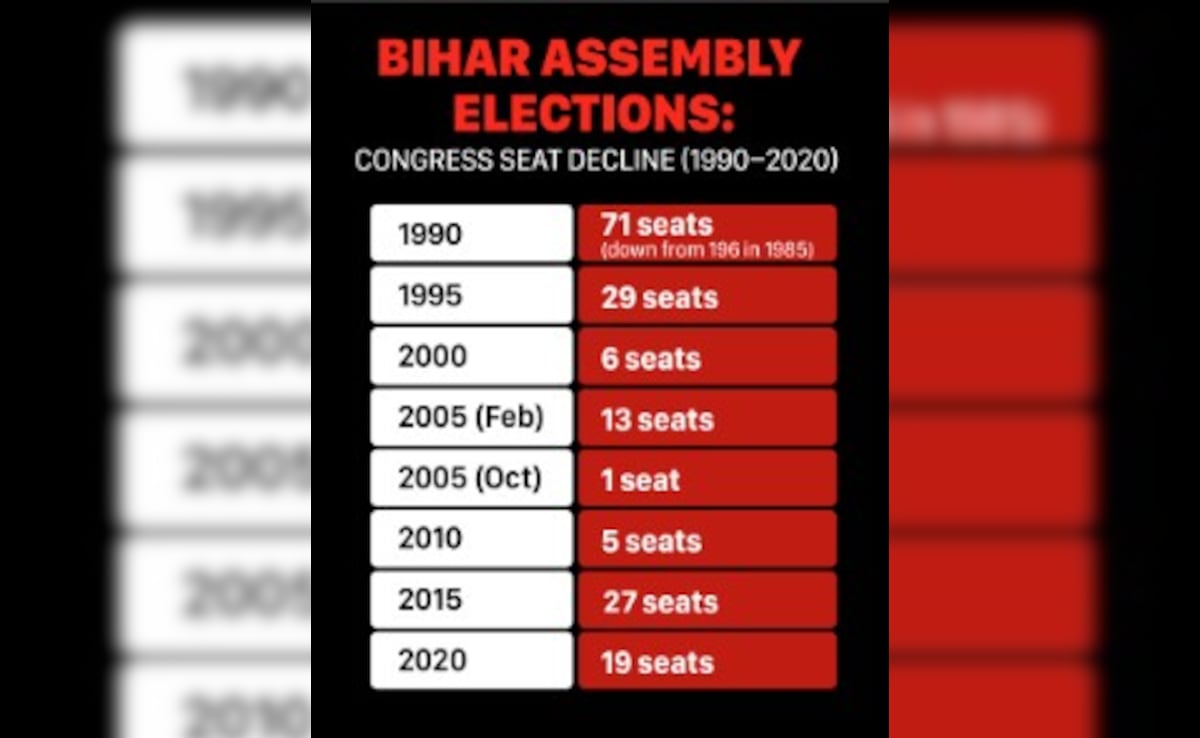
Track Latest News Live on NDTV.com and get news updates from India and around the world

